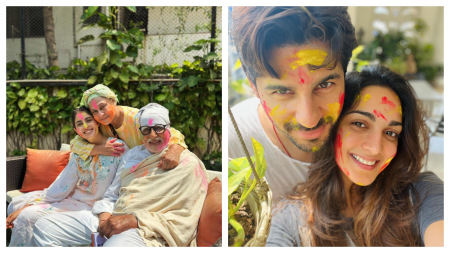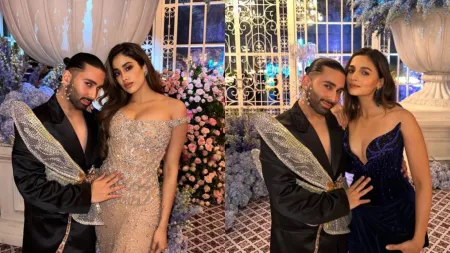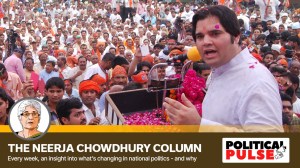- India
- International
31 Years and still going strong
Sandip Ray looks back on the 31 years in the film industry.
By Shoma A. Chatterji
1. How do you look back on the 31 years that you have completed in the film industry?
It has been a fruitful three decades of work. I was virtually born into film-making because of my father, the late Satyajit Ray. I am very happy with today’s actors. They are not only talented but are always evolving, ready to learn and to adapt. I am a fluid director. I allow them to suggest or improvise so long as these do not disturb the framework. I also ask them not to memorise their dialogues but to read the script again and again to internalise the characters. I did not hold script-reading sessions for Chaar, my next film, because there was no time.
My journey has been good because I have a big production house to back my films today when I had to wait for 25 years to make my first Feluda film. I have a solid audience to fill the theatres. The best thing about cinema is that we are learning new things all the time.
2. What made you opt for the short story format for Chaar this time?
I do not think there was an audience or the right climate for making films on short stories. But the situation has now changed and the audience is open to experiments and to watching four different stories at one go. Besides, reading as a regular habit has come down so cinema is the right medium to take the short story to the audience.
3. What are the stories in Chaar?

I chose the stories very consciously. Parasuram’s Bateswarer Abadaan (Bateswar’s Contribution) is about a noted writer where the real and the surreal come together to raise ethical questions on whether an author’s commitment lies with his characters or whether it is to himself. The two stories by my father, Dui Bondhu (Two Friends) and Kaktadua (The Scarecrow) have their own twists and turns while Pareeksha (The Test) by Saradindu Bandopadhyay is placed in the 1947-Calcutta where I have worked in Black-and-White to enrich the ‘period’ flavour of the time-setting. It is also my celluloid tribute to old Black-and-White cinema.
4. Is there a common character that binds the four stories?
No, because the stories are complete unto themselves and belong to different time, place, character, situation and settings. If there is a common bond, it lies in the humane and human element strongly present in the stories plus the twist in the tale specific to the short story format. Other attractions were the visual element the stories offered. We had decided that we would not make Kaktadua if we did not find a desolate place free of people but we finally found one close to Bolpur.
5. How did you decide on the casting?
It is extremely difficult to get dates from the actors who are outstanding in their work and so have hardly the time to give block dates to directors. Soon directors might have to choose a story depending on the availability of actors’ dates. Secondly, the physical appearance of the actor should look closer to the character in the script. Next is the chemistry between and among the actors because a healthy rapport makes for faster and better work. Paran Bandopadhyay and Saswata Chatterjee have great bonding. Paranda has a wonderful way with youngsters.
6. What made you shift the release of the film from your favourite December to June?
My producers, Shree Venkatesh Films, already have another release in December. So they thought that it would be better if they did not release Chaar at that time. For me, December is a very good time because it is winter and the audience comes in by the droves. But I left it to their discretion.
Photos
Apr 24: Latest News
- 01
- 02
- 03
- 04
- 05









































